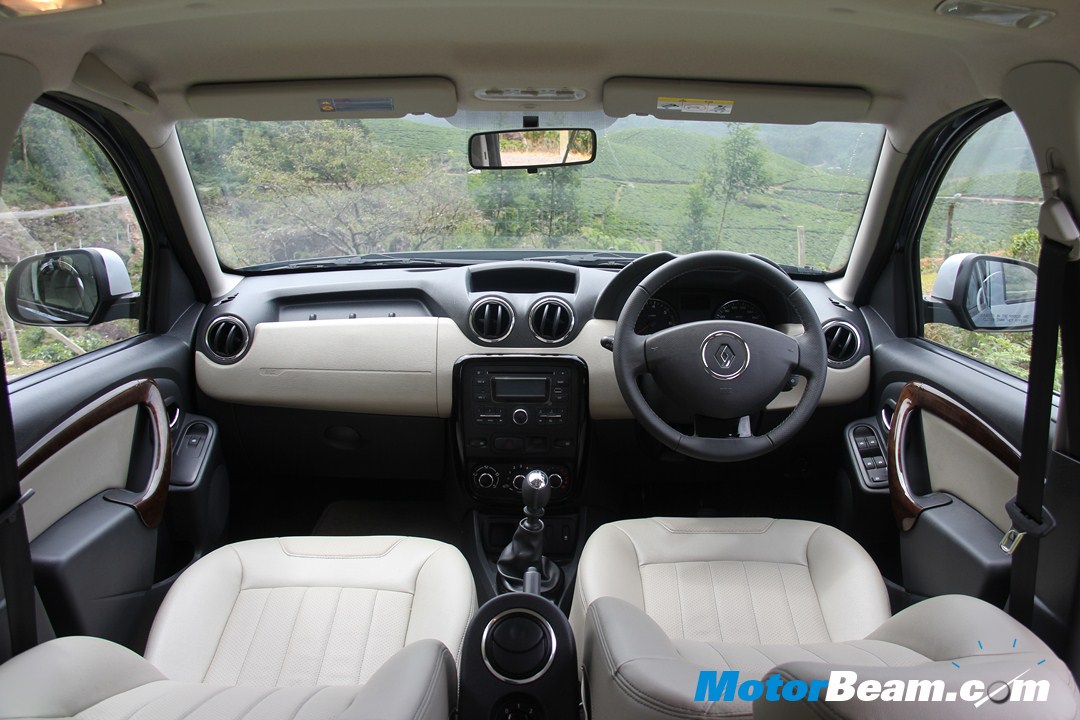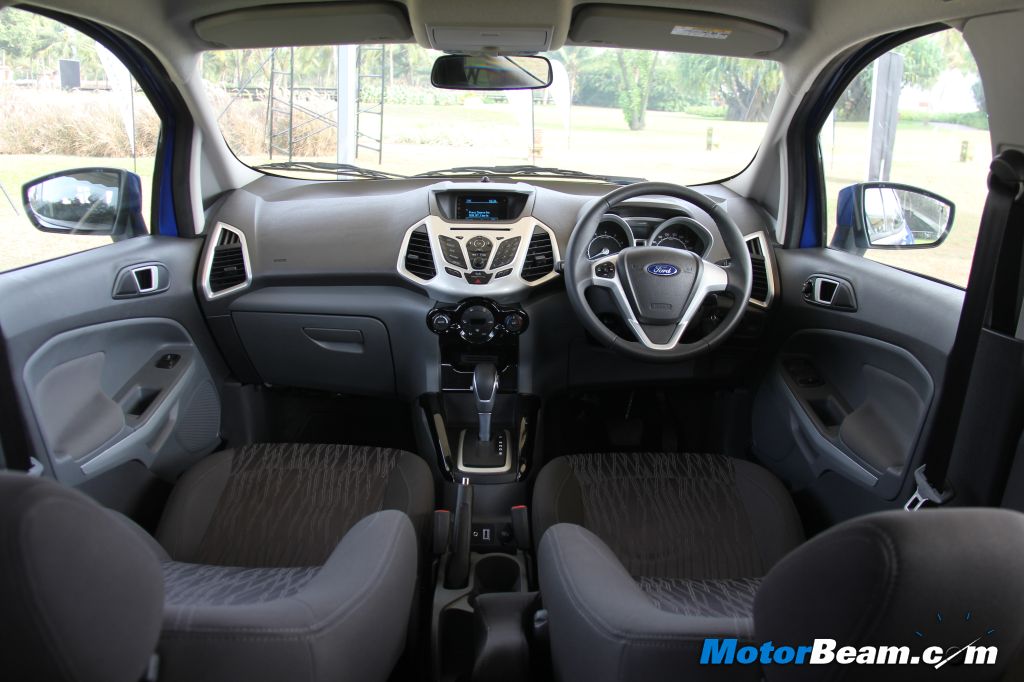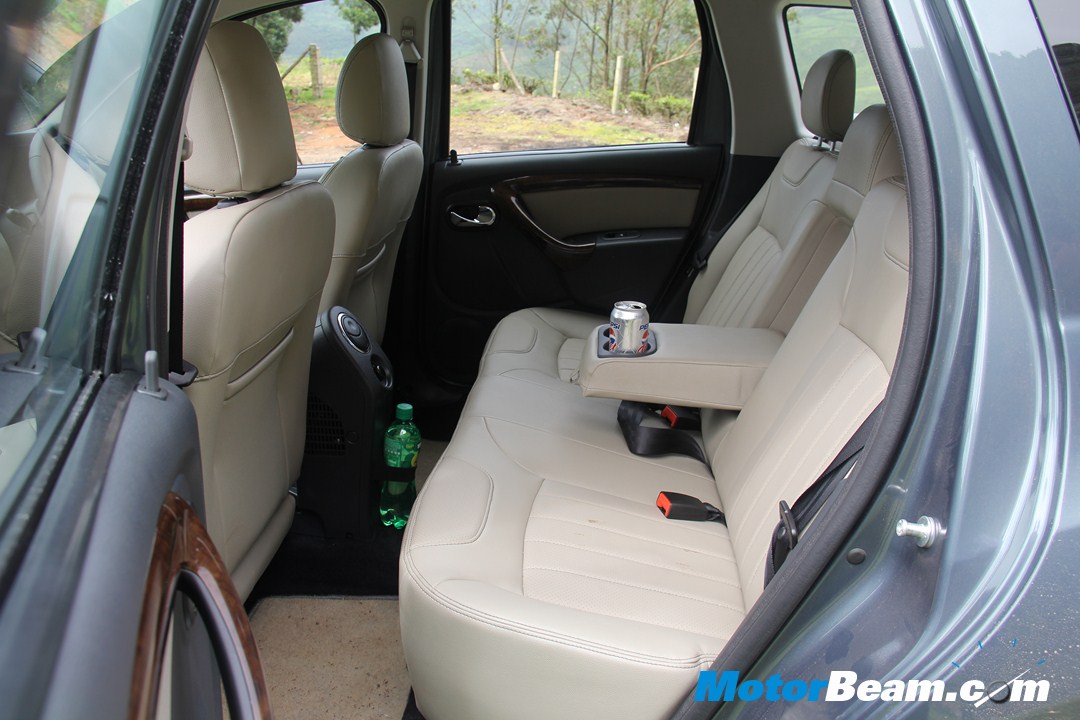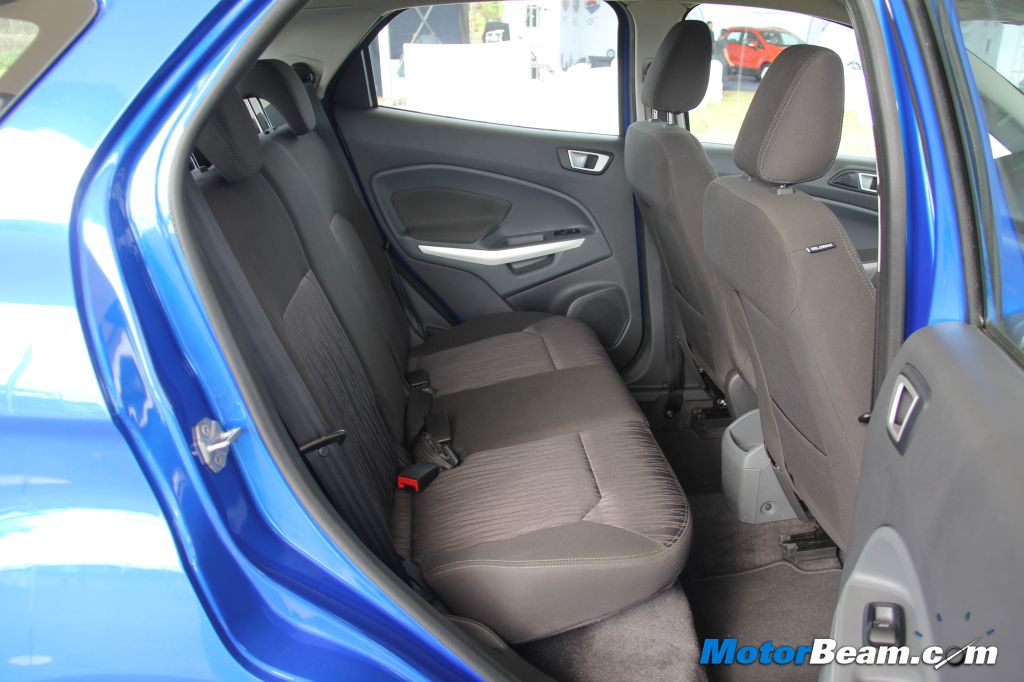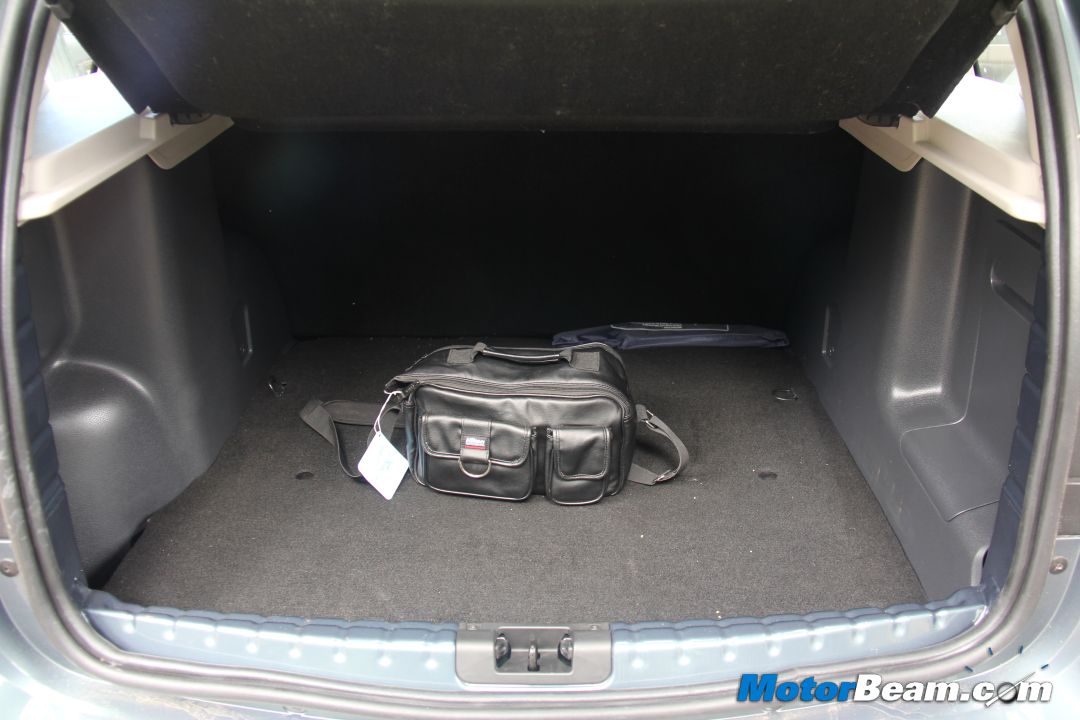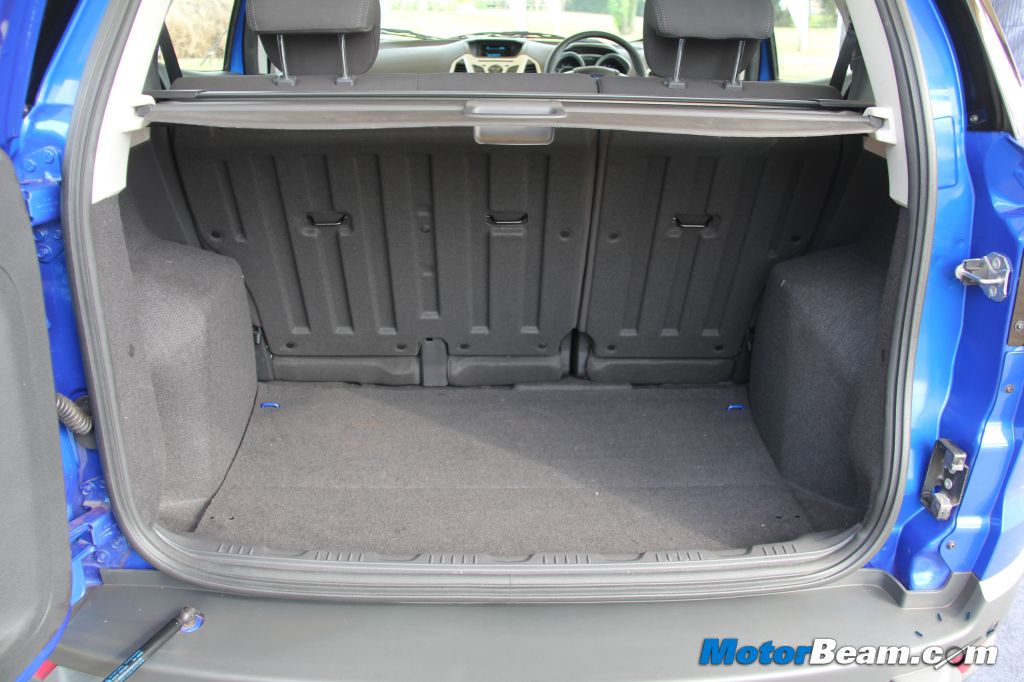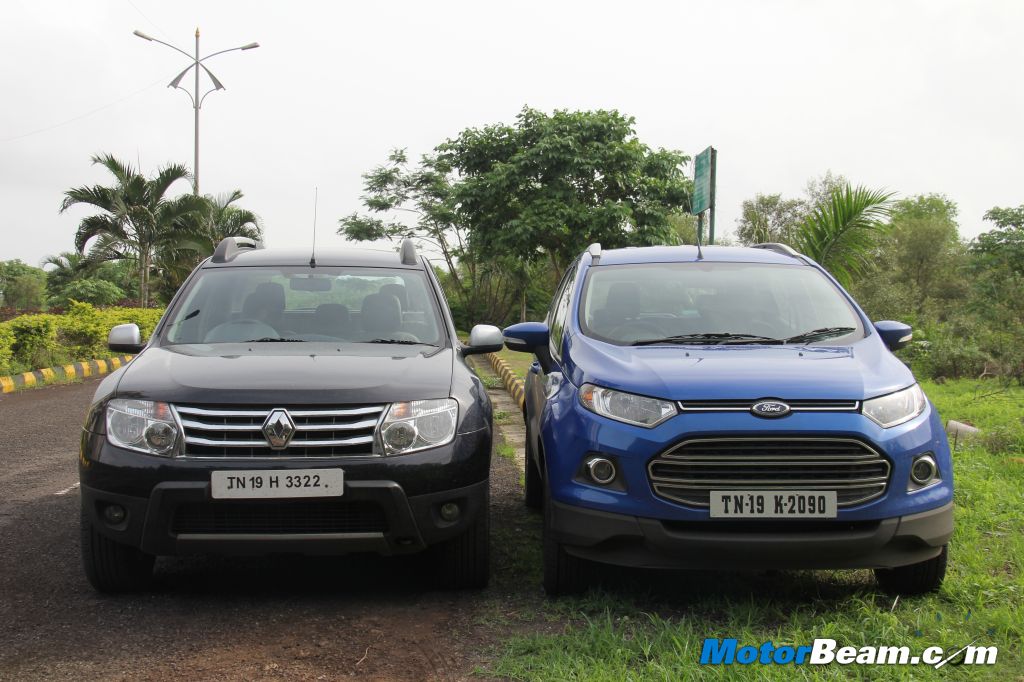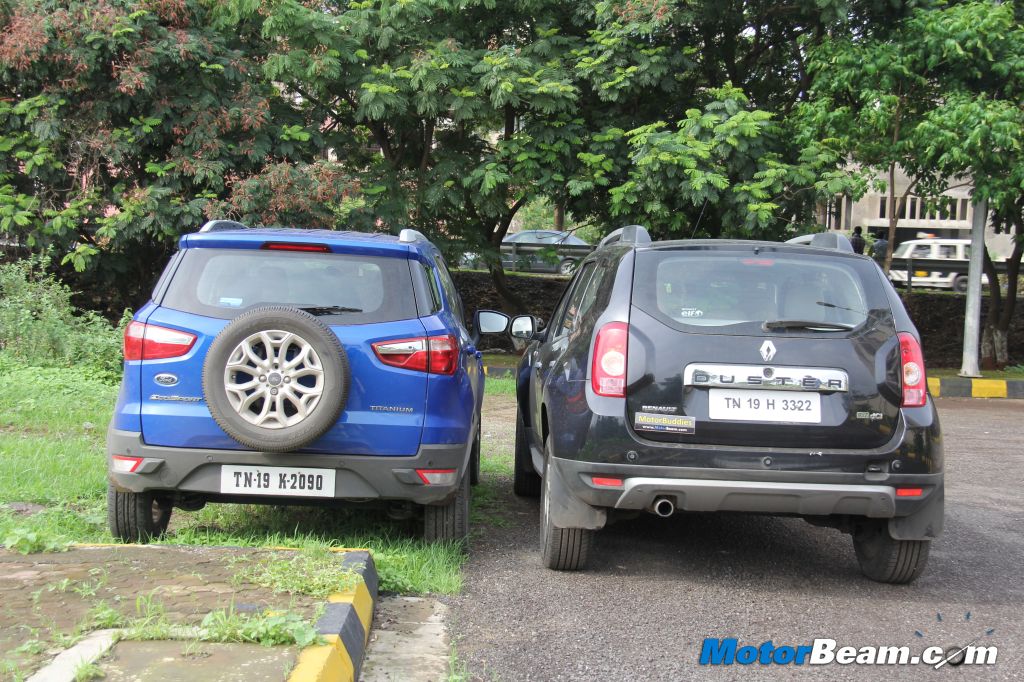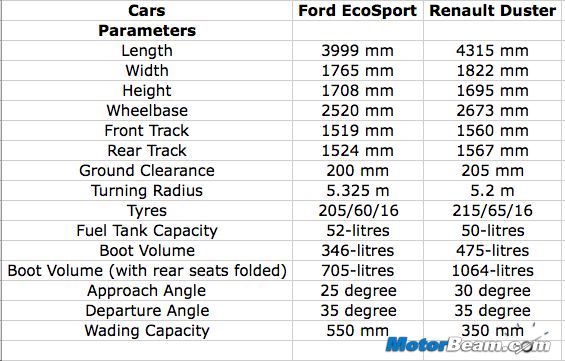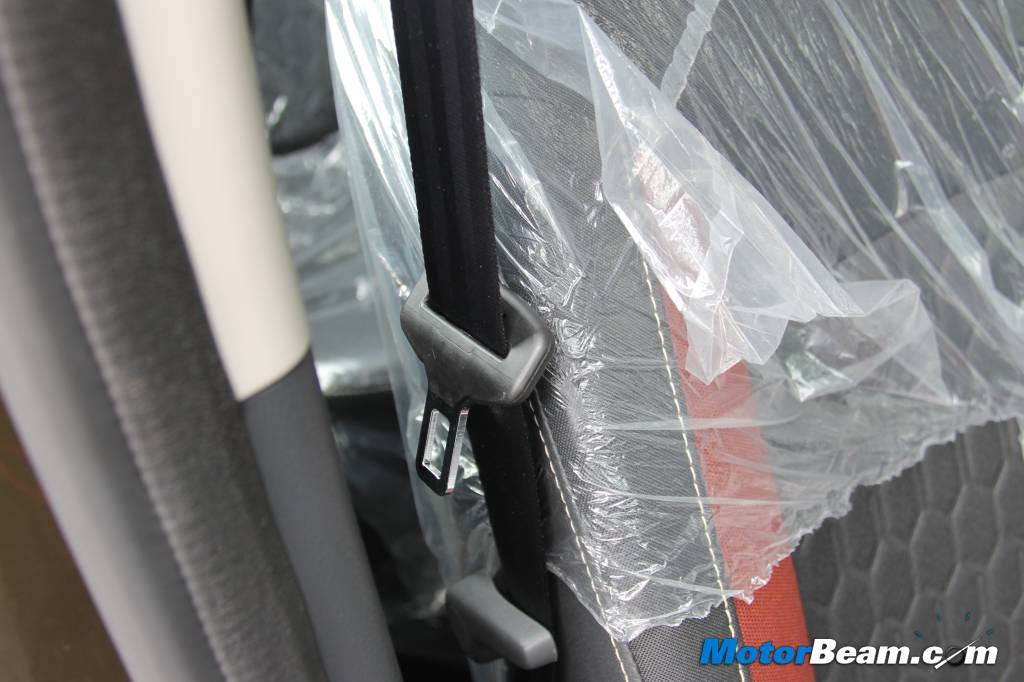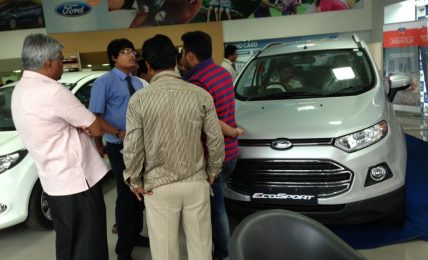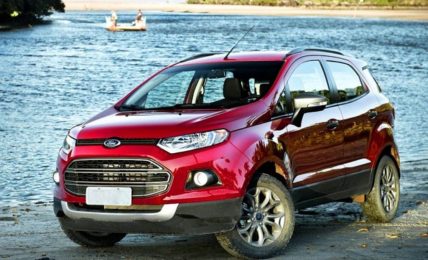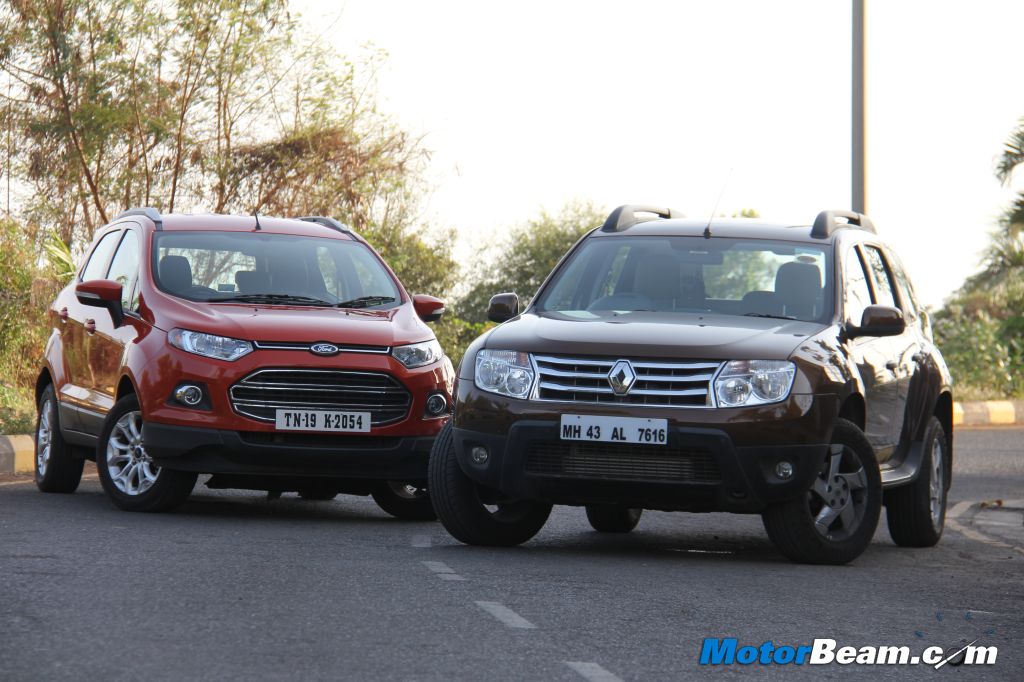
Shootout – Renault Duster vs Ford EcoSport
Price OTR Mumbai: Rs. 10.21 lakhs (EcoSport Diesel Titanium), Rs. 12.73 lakhs (Duster 85 PS RxL Option)
Both these compact SUVs offer an excellent alternative to similarly priced sedans.
You read this shootout first on MotorBeam. The battle shall commence soon. Ford EcoSport or the Renault Duster, a question which has been lingering in the minds of prospective compact SUV buyers since a very long time now. Both vehicles were unveiled at the same time but the Ford EcoSport has taken a good one year plus to hit showrooms after the Duster was unleashed by Renault in the Indian market. Delay aside, both the Renault Duster and Ford EcoSport are arch rivals not only in India but even globally. These vehicles are so similar, yet so different that deciding one amongst them can be as tough as choosing between watching James Bond or Sherlock Holmes, you know both are simply fantastic. So without much ado, we pit Renault’s top selling Indian vehicle against Ford’s new urban baby to find out which comes out on top and proudly so.
[flickr size=”center” float=”medium”]http://www.flickr.com/photos/motorbeam/8912330598/[/flickr]
Styling – The Ford EcoSport is one aggressive looking vehicle, which can sometimes make the Duster look a generation old. However the EcoSport’s almost 4-metre length means the Duster looks more substantial, being longer and wider by a considerable amount. But which vehicle looks more SUV? It’s certainly the Duster. The huge wheel arches, double barrel headlights and wider track immediately gives the Duster huge presence on the road. The EcoSport on the other hand feels tiny and more like a jacked up hatchback. That said, the attention to detail on the EcoSport’s exteriors easily outshines the Duster’s design, with the former getting a massive front grille, delicious alloy wheels and a tail gate mounted spare wheel. The EcoSport looks more modern which makes it our pick in the styling department.
Interiors – The modernness of the Ford EcoSport continues on the inside and the Renault Duster‘s cabin looks outdated in comparison. Renault has tried to spruce things up by using beige which has worked to a certain extent. The Duster’s interiors feel airy but only just. The EcoSport feels every inch a better designed vehicle. The dashboard (including the centre console and instrument cluster) is quite funky and there are more features on offer as well. The Duster’s cabin has some very different styling tweaks, which certainly don’t impress us (controls are placed in a very unconventional manner and takes time to get used to, like the steering column mounted audio controls or the rear view mirror adjustment controls which are placed below the handbrake, it does get two trip meters against the EcoSport’s single trip meter). While the Duster’s interior design doesn’t impress as much, its build quality certainly does. Compared to the EcoSport, the Duster feels more solidly put together and nothing feels flimsy, although quality is not going to win any accolades. Neither will the EcoSport’s quality win any applauds. Cost cutting is evident at certain places and although there are no panel gaps, some parts feels loose and you feel they won’t last the test of time. However the EcoSport’s door feels heavier than the Duster’s.
The front seats of the EcoSport are more comfortable than the Duster’s, offering excellent back support and a fantastic driving position (you sit slightly higher in the EcoSport but you do witness some blind spots due to the quarter glass in the A-pillar, rearward visibility is poor too). The Duster’s seats are not bad at all but the EcoSport just outshines it. While the Ford offers a driver seat armrest, the Renault doesn’t. However the Duster comes with a rear seat arm rest, which is missing in the EcoSport. The rear seat of the EcoSport offers very good comfort but can’t match the Duster’s in terms of legroom. There is decent legroom in the EcoSport but the Duster offers generous space for rear occupants and also has an AC vent for faster cooling (only in the 110 PS version) along with bigger rear windows. Headroom is not an issue in either cars and seats offer good under thigh support. Being wider, the Duster can easily accommodate a fifth passenger, who is a squeeze in the EcoSport. Both cars offer good amount of storage spaces on the inside but the EcoSport has more cubbyholes. Ford’s urban SUV also has more tech including the fantastic SYNC system which is simply flawless.
Just because its spare wheel is mounted on the tail gate, don’t even think for a second that the EcoSport has more boot space. The Duster simply trumps the EcoSport in terms of boot space, offering 475-litres compared to the Ford’s 346-litres. The EcoSport offers more flexibility as the rear seat can be folded in 60:40 ratio while the Duster’s rear seat folds in just one piece. The Duster’s hatch door open upwards while the EcoSport’s opens sidewards, we prefer the former. To open the EcoSport’s boot, you press the button on the right tail light, while on the Duster, you press the key hole on the boot.
[flickr size=”center” float=”medium”]http://www.flickr.com/photos/motorbeam/8911702467/[/flickr]
So while the Renault offers more space, the Ford covers up with better interior design and more features. You get keyless entry, button start, SYNC system, steering wheel audio controls, climate control, etc. Even the audio system of the EcoSport is truly in a league of its own (for a stock system) and outshines the Duster there too. Thus if you are traveling with five passengers frequently over long distances with luggage, the Renault Duster is the pick in the interior department, else the Ford EcoSport is the better choice with its modern interiors and gadgetry.
[flickr size=”center” float=”medium”]http://www.flickr.com/photos/motorbeam/8912333028/[/flickr]
Performance – Each car is offered with three engines but comparison between some of them simply doesn’t make sense. You might be even surprised to know about the Duster having a petrol engine option, because neither is Renault interested to sell it nor people are interested to buy a petrol powered SUV. Ford intends to change this mindset with their 1.0-litre EcoBoost petrol engine, which is simply fantabulous. The Duster’s 1.6-litre unit (104 PS and 145 Nm) is simply no match for the EcoBoost unit, which produces 125 PS and 170 Nm. So if you are looking at a petrol powered compact SUV, you have no option, you simply close your eyes and get the EcoSport. But wait, even though you don’t have an option, you still have an option. Confused? Well Ford offers two engines on the EcoSport, the second one is the 1.5-litre mill which develops 112 PS and 140 Nm. You should only opt for this engine if you want an automatic gearbox. The 1.5-litre, 4-cylinder engine is no match for the 999cc, 3-pot turbocharged motor. However the higher displacement petrol engine is also offered with the state of the art 6-speed PowerShift transmission with features like Hill Hold Assist and ESP.
[flickr size=”center” float=”medium”]http://www.flickr.com/photos/motorbeam/8911704301/[/flickr]
Coming to the diesel and more likely the fuel of choice for a majority of the buying junta, Renault offers its 1.5-litre dCi unit in two sets of tunes. The higher set of tune is again not a sensible comparison with the EcoSport because its much more expensive, while offering higher outputs (110 PS and 248 Nm). While the 110 PS diesel Duster is quite fast, it has significant amounts of turbolag and has a clutch which is heavier than the dumbbell you usually aspire to pick in the gym. This motor does offer good high end performance though and if you want a fast diesel, the Duster is easily your only choice. The hood of the Duster has an automatic strut for opening it, a nice touch.
[flickr size=”center” float=”medium”]http://www.flickr.com/photos/motorbeam/8911709403/[/flickr]
The main comparison between the Ford EcoSport and Renault Duster is when these cars are plonked with their 1.5-litre diesel engines producing 91 PS and 85 PS of power respectively. Both these units produce an identical 200 Nm of torque, coupled to a 5-speed manual gearbox offering short throws. The EcoSport’s gearbox is much more slicker than the Duster’s notchy unit. There is little to choose from both these engines, the Duster feels slightly more eager with lesser turbolag while the EcoSport has better high end punch, making it faster in the 0-100 km/hr sprint by more than half a second. The EcoSport has a higher top speed by 5 km/hr. Both engines are not really at home on the highways but perform exceptionally well in the city. Overall the EcoSport diesel is our choice against the 85 PS Duster.
[flickr size=”center” float=”medium”]http://www.flickr.com/photos/motorbeam/8911710309/[/flickr]
Driving Dynamics – Till now everything seems to be tilted in the EcoSport’s favour and one would expect it to remain so, especially in the dynamics department. However you are in for a surprise. The EcoSport doesn’t really drive like a typical Ford, which is not a good thing at all. The steering lacks ‘the feel’ you expect from a Ford car and feels a bit too light with not much feedback at high speeds. The handling is good but the tyres are simply awful. The Duster on the other hand has a steering wheel which is simply a delight, more so at high speeds. It offers terrific feedback with the only fly in the ointment being the severe vibrations which filter in on bad roads. Handling is sharp and the Duster has simply outstanding body control which the EcoSport can’t match. The EcoSport being taller has a slight amount of body roll but the Duster is devoid of any sort of body roll and stays supremely glued to the roads at high speeds. The EcoSport has good stability but the Duster is just better. You simply don’t feel the speeds in the Duster.
[flickr size=”center” float=”medium”]http://www.flickr.com/photos/motorbeam/8912321654/[/flickr]
The EcoSport does have better NVH levels but the biggest spoilsport are the tyres which not only hamper the handling but also the braking performance. The Ford’s brake pedal has better feel but the vehicle tends to nose dive on sharp braking at high speeds (the dive is much lesser in the diesel EcoSport which is slightly front heavy and thus stiffer), there is no such feeling in the Duster, which never swings any other way and remains throughly composed. Even the ride quality of the Duster outdoes the EcoSport’s. The latter does get a bit harsh on really bad roads but the Duster simply glides over roads and does so with immense confidence. While the Duster is longer, it has a shorter turning radius which aids in city driving. Thus the dynamic round goes to the Duster, quite easily.
[flickr size=”center” float=”medium”]http://www.flickr.com/photos/motorbeam/8912332120/[/flickr]
Off-Road – Not that you will take either of these cars off-road as both are front-wheel drives (all-wheel drive Duster expected soon) but the Duster seems like a more capable vehicle on the less beaten path. The Duster has a 5 mm higher ground clearance which is negligible but it also gets an engine guard, which is missing in the EcoSport. Both cars offer the same departure angle (35 degree) but the Duster has a better approach angle (30 degree vs EcoSport’s 25 degree). The EcoSport however offers an amazing water wading capacity of 550 mm, which trumps the Renault Duster, Tata Safari, Mahindra Scorpio’s 350 mm and Maruti Suzuki Grand Vitara’s 500 mm. The Mitsubishi Pajero and Toyota Fortuner offer higher wading capacities of 600 mm and 700 mm respectively and they cost more than double. However the Duster wins this round, not that it matters much in the Indian driving cycle.
[flickr size=”center” float=”medium”]http://www.flickr.com/photos/motorbeam/8911701301/[/flickr]
Cost of Ownership – The Ford EcoSport will be cheaper to maintain with Ford using its child parts strategy to reduce spare price costs. Ford also has more service centres and thus a better reach which makes the EcoSport the more practical vehicle to live with. Renault offers a 4-year / 80,000 kms standard warranty, the EcoSport comes with a 2-year / 1 lakh kms warranty which can be extended by another 2-years / 1 lakh kms, which is excellent. Being a newer vehicle, expect the EcoSport to have better resale too. Both cars (diesel versions) will return very similar mileage figures but the EcoSport is marginally more frugal with 1 km/l more fuel efficiency. Expect around 14 km/l in city driving conditions and 16 km/l on the highway (the EcoSport will deliver 15 and 17 km/l respectively).
Verdict – We told you at the very start of this post, it won’t be easy to choose between either of these compact SUVs so easily. However it’s not as tough either. If you want a petrol powered compact SUV, close your eyes and get the Ford EcoSport. If you want an automatic, again the EcoSport is your only option. If you want a fast diesel with good grunt on the highways, then buy the Renault Duster 110 PS. However the above buyers are a minority, the big question is, which one should the majority buy – the EcoSport diesel or the Duster 85 PS? The Duster feels more like an SUV, offers more space and drives brilliantly. The EcoSport on the other hand is more feature loaded and looks more modern too. Ford has undercut the Duster by a significant amount (Rs. 2 lakh plus) which makes the EcoSport the clear winner of this comparison test.
The Ford EcoSport has been outselling the Renault Duster in Brazil and there is no reason it shouldn’t repeat the same success in India.
Ford EcoSport vs Renault Duster Specifications –
Further Reading –
Renault Duster Review
Ford EcoSport Review
Diesel Ford EcoSport Review
Ford EcoSport PowerShift Review
Ford EcoSport vs Fiat Avventura
Renault Duster vs Ford EcoSport Video Comparison
Ford EcoSport vs Maruti S-Cross vs Renault Duster


